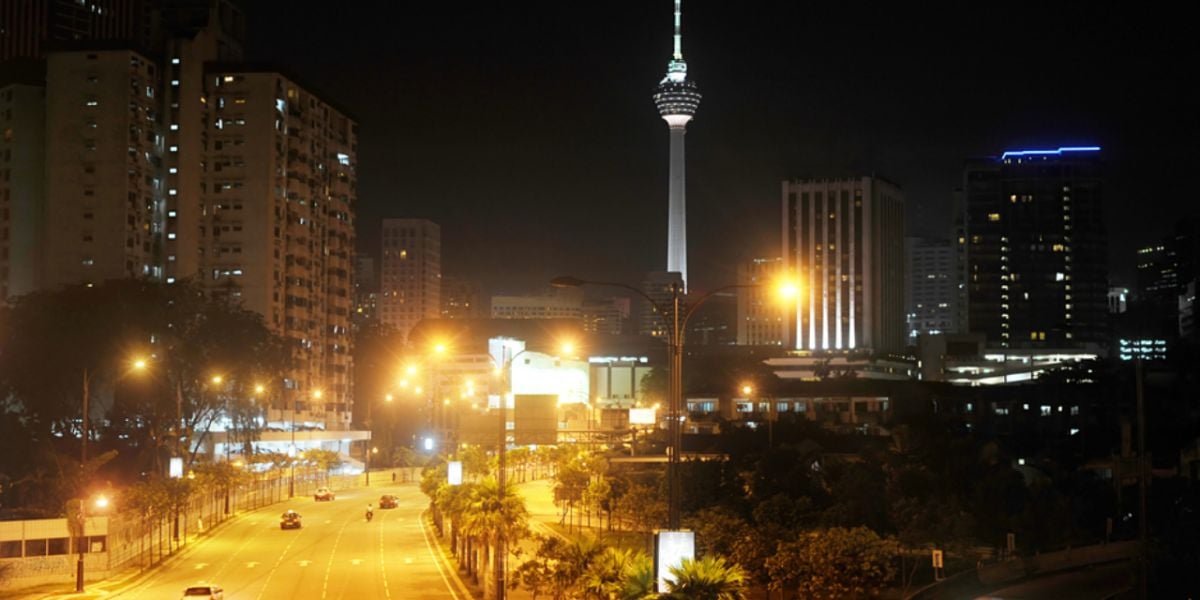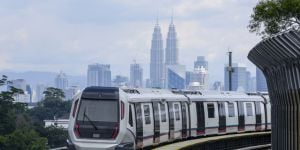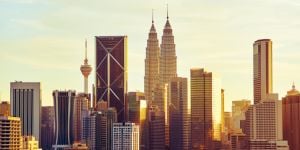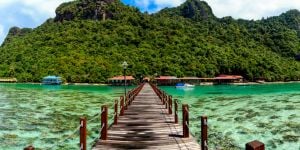
Kuala Lumpur is a real megalopolis, surrounded by suburbs and neighborhoods so different from each other that they give the impression of moving from one country to another. Some of these areas are ideal for those wishing to settle in Kuala Lumpur. Others have excellent educational institutions, green spaces, commercial areas, tall buildings, hotels, bars, popular discos and good restaurants. The city is generally quite safe, no matter where you are. Nevertheless, apartments, buildings and expatriate quarters are often secured by gates and 24-hour security teams.
Kuala Lumpur is the historic capital and former administrative capital of Malaysia. It is undoubtedly the most populous and largest city in the country, with its 1,800,000 inhabitants and an area of 243 km2. Its metropolis, which the Malaysians coined as Klang Valley or Greater Kuala Lumpur, is also the country's most important urban center, bringing together more than 7 million inhabitants and encompassing several large adjacent cities such as Putrajaya, Cyberjaya, Puchong, Subang Jaya or Petaling Jaya, among others.
The history of the city begins in the 1840s, when a few Chinese prospectors began to exploit rich tin deposits located in the middle of the jungle, not far from the confluence of the Kelang and Gombak rivers. The name Kuala Lumpur is also a direct reference to its geographical location. It literally means “marshy confluence” in Malay. For years, Kuala Lumpur has been nothing but a small mining village populated with prospectors' bamboo huts and a few shops, before rapidly developing into the city that is experiencing the strongest economic and urban growth in all of Southeast Asia since 1857. This only came with its ideal location between two rivers and when it started to serve as a port of embarkation for tin for export. This is still the case today along with the strongest economic and urban growth in all of Southeast Asia.
The city of Kuala Lumpur alone forms a landlocked federal territory within the state of Selangor. The territory is governed by a Datuk Bandar, or Lord Mayor. It is divided into 11 districts: Bukit Bintang, Titiwangsa, Setiawangsa, Wangsa Maju, Batu, Kepong, Segambut, Lembah Pantai, Seputeh, Bandar Tun Razak and Cheras. Each of these districts is divided into several other quarters. However, the city center, aka KLCC for Kuala Lumpur City Centre, forms the country's financial and commercial heart.
KLCC
KLCC is a bustling neighborhood, where businesses and skyscrapers sit alongside culturally significant sites and the city's major hotspots. It is also the area where rents are the highest not only in Kuala Lumpur but also in the entire country.
The area is connected via Kuala Lumpur's public transport systems and homes several international schools, notwithstanding the commercial heart of KL. While traffic congestion and the resulting noise pollution remain a problem, Parking spaces are limited. This affects residents and those who commute thereto for work. On the other hand, this kind of neighborhood seems to be suitable for young professionals who don't mind sharing apartments with limited spaces to make the most of downtown nightlife. KLCC is home to many restaurants, bars and nightclubs that are very popular among Malaysian and expatriate communities alike.
There is also the KLCC Park, which is a green space created to beautify the surroundings of Malaysia's most famous buildings, The Petronas Towers. The latter is a true national symbol that was still the tallest tower in the world a few years back.
Mount Kiara and Sri Hartamas
Mont Kiara is a high-standard neighborhood near Kuala Lumpur. It harbours interesting houses, bungalows, and luxury condominiums. The area is popular within expat communities for its international schools and remote location away from the hustle-bustle of the main city. Many long-time residents choose this area for the comfort and peace it provides. There are several shopping centers, spas and leisure centers. Unfortunately, Mont Kiara is not easily accessible by public transport due to its remoteness, and a car is essential to get around. Residents have designated parking areas and the area is very safe, with gated facilities that procure a safe family atmosphere.
Sri Hartamas is located on the border of Mont Kiara and is often considered as an extension of this district. Sri Hartamas harbours a number of luxury buildings. However, the unusually rapid pace of real estate development in Malaysia resulted in the availability of many vacant apartments. Hence it has become possible to negotiate better offers with real estate developers or landowners, in case you would be inclined to acquire property in Kuala Lumpur. Residents of Sri Hartamas also have access to Publika, a commercial and cultural center where many festivals and concerts are regularly held. On the bad side, the continuous development around the area implies a fairly high level of noise pollution.
Bangsar
Bangsar is another prized area by expats. This is due to the lively atmosphere and community spirit that exist there. Bangsar's Jalan Telawi street is dotted with eclectic cafes, cool shops and trendy restaurants. It also makes places absolutely worth visiting if you want to discover all the richness of gastronomy in Malaysia. The area is populated both by foreigners and locals. This helps at creating a mix of cultures. Common properties include houses or bungalows, not to mention a few apartments with brand new public infrastructure. The area is home to Pantai Hospital, which is highly frequented by expatriates. The district also includes a few primary and secondary schools, including an establishment that offers Montessori-type education; My Montessori School. This institution is frequented mainly by expatriate children, but not exclusively. In short, Bangsar is a district of Kuala Lumpur that is much appreciated not only for its calm and security but also for its multiculturalism and the delicious flavors of food that emanates from its restaurants.
TTDI
TTDI (Taman Tun Dr. Ismael) is a gated area that comprises both individual houses and residential buildings. Known for its spacious properties, parks and green spaces that greatly enhance the quality of life within this urban zone, the area is mostly inhabited by local citizens. A few expatriates have taken up residence there over the years. The monthly rental of the apartments and other residences therein starts from RM2,500 and can go up to over RM30,000 in cases of the most luxurious accommodations in the area. The area is connected to the bus network and is perhaps well suited for those looking to get away from the hectic pace of downtown Kuala Lumpur.
Damansara Heights
Damansara Heights is another prosperous area bordering Mont Kiara and Bangsar. Located on a hill, this district is mainly prized for the magnificent views of the city it has to offer. It is also close to KLCC. Rental prices there, range between RM1,800-6,600 monthly, which makes them relatively expensive. Damansara Heights is, by all means, a comfortable, quiet and safe area with excellent accessibility. As such the rental costs are considered as being reasonable. The area is home to international schools, and the quiet and family atmosphere that reigns there makes it one of the most pleasant places in Kuala Lumpur, but also one of the most popular with foreigners.
Ampang
Never far from the city center, Ampang is a district of Kuala Lumpur known for its historical richness, its culture, and its chic side. Thereby are some beautiful lakes, where one can find old colonial-style buildings rubbing shoulders with more modern-style buildings. Locals in Kuala Lumpur call Ampang the embassy district since it is home to several of them, including those from France, the UK, Russia and China. The district is very popular with expatriates, but it also attracts tourists for its beauty. The latter would go there most of the time to visit the National Art Gallery or the Istana Budaya center, or the Palace of Culture. This renowned cultural hotspot offers theatrical plays, operas and classical concerts performed by local and international artists.
Bukit Bintang
Bringing together three of Kuala Lumpur's main arteries (Jalan Bukit Bintang, Jalan Pugu and Jalan Sultan Ismail), Bukit Bintang is one of the city's most popular areas. There, one can find many restaurants, bars, cafes and shopping malls, making it a popular spot for expats and trendy young people residing in the city. The name Bukit Bintang means "hill of stars" in Malay. This is the place where you can discover delicious local dishes from some of the city's most famous street vendors.
Chinatown
Most major international cities have a Chinatown, and Kuala Lumpur is no exception. You should know that the city has the country's highest density of inhabitants of Chinese origin (43%, against 45% of Malays). The district is home to the famous central market of Kuala Lumpur, a real open-air bazaar that allows you to discover all the authenticity of Malaysian culture and buy an infinite number of items at low prices. There are also some ancient temples such as the Sri Maha Mariamman, the Guand Di or the Sin Sze Sia, that are worth a visit.
Little India
From its real name Brickfields, the Indian district of Kuala Lumpur offers a real change of scenery to those who visit it. There live more than 40,000 inhabitants of Sri Lankan origin. Sri Lanka has been one of the main sources of immigration in Malaysia. There, you can find many inexpensive clothing stores. The Sogo shopping center, one of the most famous in the city is also a superb flower market. This is a must-see as it is a very colorful spot in Kuala Lumpur that absolutely deserves your attention for a visit and to soak up an important part of the local culture of Kuala Lumpur. Little India is very lively on Saturdays, especially when many of the markets in the area open their doors.
We do our best to provide accurate and up to date information. However, if you have noticed any inaccuracies in this article, please let us know in the comments section below.








